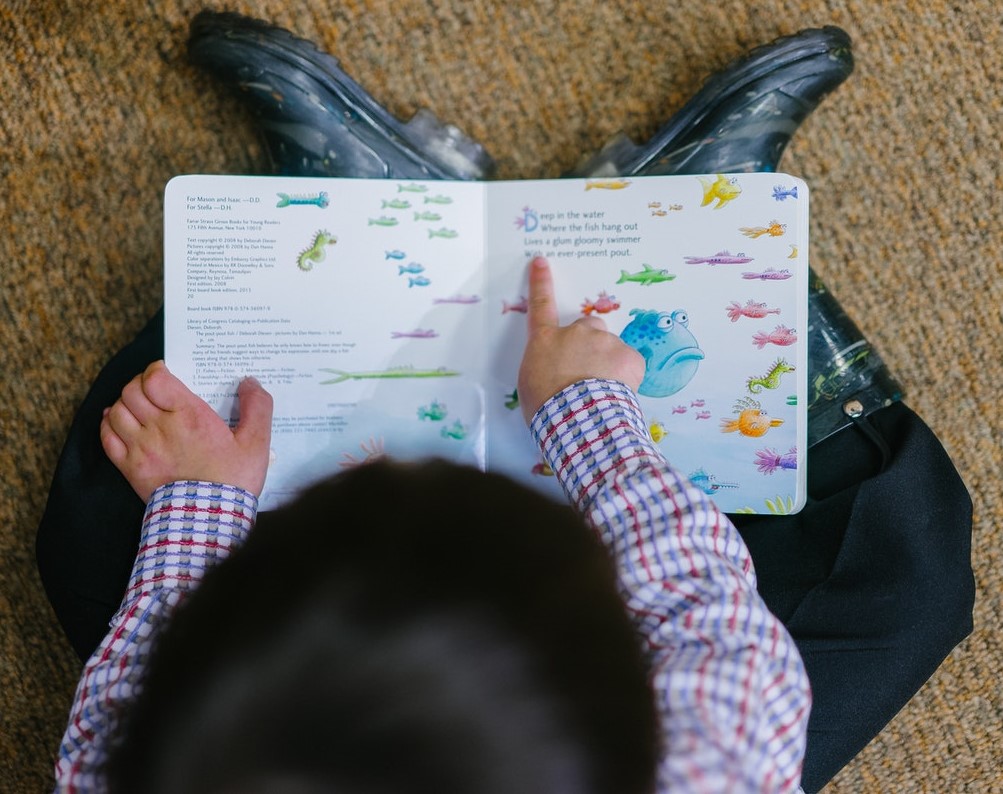Children are, by nature, remarkable storytellers. Once they acquire language, they can and will weave the wildest tales for your listening pleasure. As they haven’t yet had their minds moulded by common trends and tropes in popular stories, it’s impossible to predict what plot twist they will throw at you next. And, if you’re able to write them down, there’s no greater joy than the side-splitting laughter brought on by rereading their crazy stories ten years later. It’s even better if you can get them to scribe their own stories as a way of developing writing skills for elementary school.
For elementary-aged children, “writing” is a nebulous term. It could mean learning how to print the alphabet, figuring out how to structure plots, or anything in between. No matter where your child is currently, you can help. Students will get writing practice at school, but there is a lot of supplemental work you can do from home.
One of our academic advisors, Rhiannon Heim, has shared her views as an experienced elementary teacher, and we’re thrilled to lend you her advice!

Good Readers Make Good Writers
Strong reading skills lead to strong writing skills, so it’s important to read often. Start by reading to your child while they’re young, pointing out each word as you go. This will help them associate combinations of letters with the sounds they make. Encourage them to repeat after you so they can acquire the skills for themselves.
Rhiannon mentions that, “for a younger or non-reading student, it is so important for parents and families to read to the child daily. When children see their role models reading, they are more likely to want to emulate this behaviour themselves.” She also recommends that “elementary students should read for at least thirty minutes each day,” noting that “beginning or non-readers may have to start somewhere small like ten minutes and gradually add time each day or week.” The more the better!
Once your child is able to read on their own, challenge them with books at or beyond grade level. Help them with active reading. If they come across a word they don’t know, have them look it up in the dictionary. Demonstrate how to take notes about characters and events while reading. Have them point out literary devices like metaphors and personification. And, after they’ve finished a chapter, ask them to summarize it for you. This will aid with their reading comprehension which will make a massive difference in their writing.
If you’re looking for a place to get started, check out this list of graphic novels for kids. And, to keep track of all the books you read, use this awesome visual reading log from EveryDay-Reading.com!

Practice Printing
Many kids struggle to make their writing neat and legible, but you can help. There are plenty of education resources filled with activities to assist students with their writing skills for elementary school, and you can work together on them from home. Even something so simple as spending a little extra time tracing letters every day can make a difference. Just print out some alphabet tracing templates and get started!
Even if your child isn’t dyslexic, employing dyslexia learning strategies can make learning the alphabet far easier. For example, make sure they are using a different set of pencil strokes to shape the letters “p” and “q” so that they don’t get mixed up. Lead by example—kids are masters of monkey see, monkey do!
Rhiannon says that one of the most important things you can do as a parent is to always encourage your child to write. “I think it is critical, when students are working on reading and writing, that it is practiced consistently at both home and school (and tutoring if applicable). All members of the child’s team should be encouraging their writing, even if it isn’t yet legible, doesn’t make sense, or is not perfectly edited.”
As with any skill, the key is consistency. Have your child practice their printing often so that they develop confidence in their neatness and accuracy. Once they graduate from tracing letters, provide them with exercises requiring them to write words using all the letters of the alphabet to keep things familiar. Spacing between letters matters, and it can take time to get the hang of, but practice makes perfect.
Prepare for Spelling Tests
Copying words is one thing, but spelling them off the top of your head is another. If your child has spelling tests at school, take an active role in helping them study. This can look like arranging mock spelling tests, asking your child to write a series of sentences which use the spelling test words, or having your child write the words with their definitions.
The goal of a spelling test should not be to see if kids can memorize the way the words are spelled, but to have the kids acquire those words as functional parts of their vocabulary. Explain to your child that, just like a tradesperson has tools to do their job, words are their tools to use while writing. The more they have, the better!
You don’t need to wait for the teacher to announce a spelling test—you can organize your own spelling tests at home. Check out this great list of elementary vocabulary words, sorted by grade level. You can use these as a launching point, but you can throw in whatever you think is worth knowing.
Practice Essential Writing Skills for Elementary School

Keep a Daily Writing Log
Once your child has the skills to spell words and form sentences, turn writing into a habit. Sorry, parents, but you’re on the hook for this one! It is imperative that your child dedicates a few minutes (or more) every day to writing something. They could simply detail the events of their day at school, or maybe they could describe something they’re eagerly anticipating. Whatever it is, make sure they have the time to write about it every single day.
If they’re having a hard time writing something, give them a prompt. You can make this into a game, and it’s lots of fun! Provide the first sentence for them, and have them tell a story with it (this works wonders). Ask them how they would spend a million dollars. Get them to design a mansion using only words. You can also play to their passions, whatever those passions are. If they’re into cars, tell them to describe their dream vehicle. If they like art, have them describe the most beautiful painting they’ve ever seen. The options are endless!
Rhiannon knows the benefits of having her students write about their passions, and she uses the technique often. She notes that, “with older elementary students, I will show them a list of writing prompts and get them to pick the topic that most interests them. For example, a student may not enjoy writing a report, but they could really love writing their own creative fiction story!”
Answer the Five W’s and H (Who, What, When, Where, Why, and How)
Wait, I thought Mr. Socks was eating an ice cream cone… When did he get a hot dog? And how did he suddenly go from climbing Mt. Everest to snorkelling in Hawaii?
While your child is writing their masterpiece, remind them to answer the five W’s and H. This will ensure that they’re able to effectively get their point across and establish some semblance of sense. Nonsense is hilarious and a treat to read, but your child can still write hilarious nonsense while answering the five W’s and H.
Study the Shape of Stories
As your child hones their writing chops, it will be important for them to consider the essential aspects of stories. The five most important ones are the following:
- Characters
- Setting
- Plot/Important Events
- Conflict
- Resolution
If one or more of the above components is missing, a piece of writing simply isn’t a story. To help your child practice their storytelling skills, you can provide them with a fun story organizer to keep those five points in mind. Also, while they’re reading books, you can get them to fill in the same organizer for the book they’re reading. This will show them that every story has these same essential components and that they should include them in their own writing as well.
We’re Here to Help with Writing Skills for Elementary Students
At Tutoring…With a Twist*, we’re always excited to lend a hand. With our unique approach to tutoring, your child will unlock their love for learning and find their writerly voice. Working with a tutor, especially one of our twisted ones, can make a massive difference in a child’s education adventure.
Rhiannon seconds this notion, saying that “a well-matched tutor can help a child’s writing skills by first seeing what level the student is at in terms of their writing ability, and then working on specific sub-skills to support writing. Some areas where I have focused with some of my learners include further developing grammar, spelling, and vocabulary. It can also be helpful for tutors to show students examples of strong writing and just keep encouraging the student with their writing and unleashing their inner author.”
Our twisted tutors have a wealth of experience working with students of all ages and abilities, and they would love to be a part of your child’s learning journey. As Rhiannon says, “When students feel supported, encouraged, and confident in their own abilities, this will ultimately lead to more positive behaviour and, with practice, increased performance. Though this may take a lot of hard work, encouragement and repeated practice will benefit the learner in the classroom.”
Our tutors can help make the hard work seem easy. Don’t hesitate to contact us for more information—you’ll be glad you did!
To help spark your child’s interest in reading and writing, check out our free audiobooks, read by our own twisted tutors. Also, browse through the high-quality education resources we recommend to make the most of learning at home.
Stay connected with the community by checking out the upcoming events in BC and following our Facebook page.
*Services provided by With a Twist Education Ltd.

